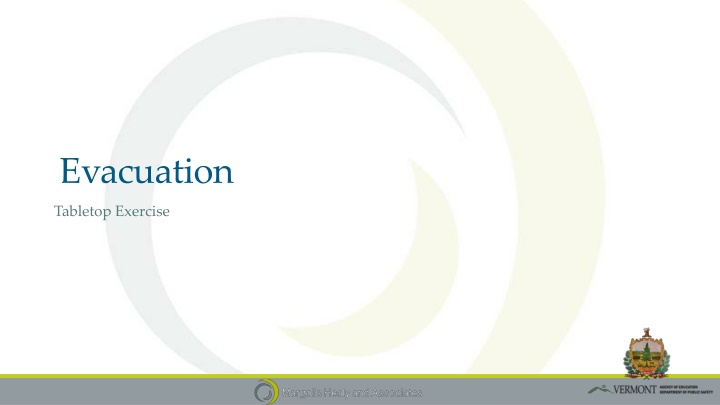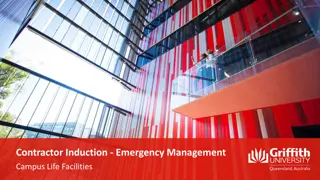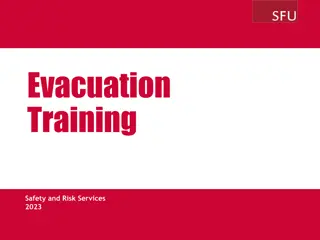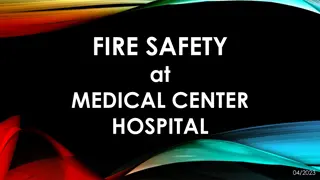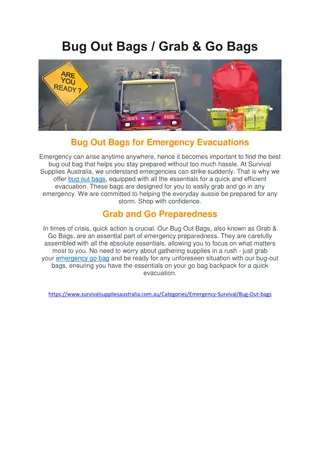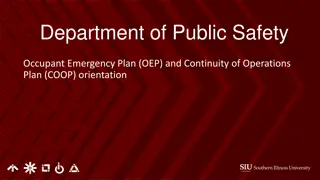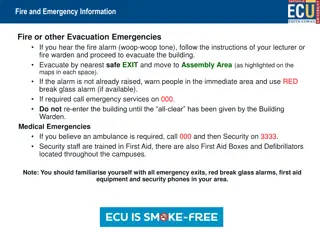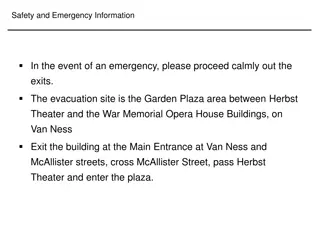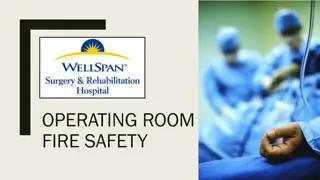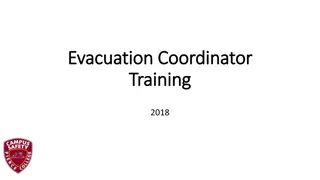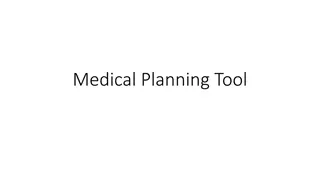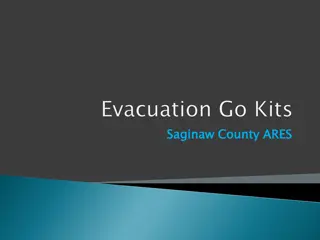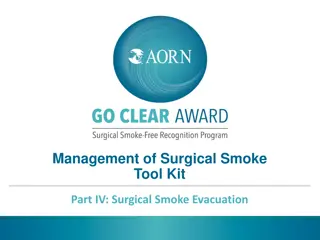Evacuation
This tabletop exercise focuses on testing evacuation procedures in a school setting, aiming to strengthen coordination with partners, identify improvement areas, and assess roles of staff. It includes welcome and introductions, exercise goals, objectives, participant roles, exercise structure, and rules for players.
Download Presentation

Please find below an Image/Link to download the presentation.
The content on the website is provided AS IS for your information and personal use only. It may not be sold, licensed, or shared on other websites without obtaining consent from the author.If you encounter any issues during the download, it is possible that the publisher has removed the file from their server.
You are allowed to download the files provided on this website for personal or commercial use, subject to the condition that they are used lawfully. All files are the property of their respective owners.
The content on the website is provided AS IS for your information and personal use only. It may not be sold, licensed, or shared on other websites without obtaining consent from the author.
E N D
Presentation Transcript
Evacuation Tabletop Exercise
Exercise Agenda Welcome and Introductions Housekeeping Exercise Overview Goals Rules Objectives/Core Capabilities Assumptions and Artificialities Roles and Responsibilities Schedule Structure Scenario-Driven Exercise Facilitated Discussion in Four Modules Hot Wash Closing Comments Debrief
Welcome and Introductions Opening Remarks Facilitator Introductions Hosting Agency Participants Exercise Staff
Exercise Goals Test plans to prepare for, respond to, and recover from an Evacuation situation in our school. Ensure effective coordination of plans and actions with school and community partners. Strengthen relationships with our response partners. Identify areas for improvement and develop a corrective action plan.
Objectives and Core Capabilities Assess the roles and responsibilities of the school administration and staff in testing evacuation, emergency response, and recovery efforts. Assess the ability to effectively test the notification and activation procedures of the school community. Determine strengths and weaknesses in local coordination and integration of response resources. Identify critical issues and potential solutions. Test the ability of utilizing critical transportation.
Participants Roles and Responsibilities Players: Respond to the situation presented, based on expert knowledge of response procedures, current plans and procedures, and insights derived from training. Facilitator(s): Responsible for moderating and keeping participant discussions focused on exercise objectives and core capabilities, and ensuring relevant issues are explored; provide situational updates and additional information; resolve questions as required.
Exercise Structure A scenario-driven, facilitated discussion-based exercise The exercise is divided in four modules: oModule 1: Initial Response Scenario Background oModule 2: Response Scenario Update #1 oModule 3: Response Scenario Update #2 oModule 4: Recovery Scenario Update #3 Debrief
Rules for Players There are no right or wrong answers/ideas. Varying viewpoints are expected and will be respected. Exercise decisions are not precedent setting. Players are encouraged to consider different approaches and suggest improvements/ Think outside the box.
Ground Rules This is not a test of current capabilities and plans. It is a discussion of probable responses to a hypothetical emergency. The exercise will be an open dialogue. All ideas and input are welcome. One person speaks at a time. The scenario will be accepted as is. However, the facilitator may make modifications as deemed appropriate. No hypothetical resources are available.
Assumptions and Artificialities The exercise is conducted in a no-fault learning environment wherein capabilities, plans, systems and processes will be evaluated. Participants respond to the TTX scenario events and other exercise information from the perspective of their school s current policies, plans, processes and capabilities. The exercise scenario is plausible, and events occur as they are presented in the TTX scenario, allowing for artificialities. All players receive information at the same time.
Exercise Schedule Exercise Logistics and Set-up Registration Welcome and Introductions Exercise Overview Module 1: Initial Response Scenario Background Break Module 2: Response Module 3: Response- Update 1 Module 4: Recovery Break Hot Wash Closing Comments Debrief
Tabletop Processes A scenario and update statements will be used to generate discussion of probable response actions. Participants will provide situational responses based on established procedures and plans. The Emergency Operations Plan (should be) available for reference. Other than maps and diagrams, no additional materials will be provided. The exercise will conclude with development of action steps needed to support future mitigation and preparedness efforts.
Exercise Guidelines Respond based on your knowledge of your school plans and capabilities. Discuss and present multiple options and possible solutions. Be aware that each phase will not have complete resolution. Any issues that cannot be resolved within a reasonable period of time will be tabled as an after-action item. If more information is needed, ask. Assume any agencies that are requested are initiating their response plans.
Module 1 Initial Response: Scenario Background
Scenario It is a clear, crisp Monday in December. The temperature is 28 degrees Fahrenheit. At approximately 12:45 pm, smoke is detected in the boiler room, sounding the fire alarm. The school custodial team responds to the boiler room.
Discussion Based on the information that you have, what specific response actions do you choose to take? Why? Based on the response action chosen what are your concerns? What is the procedure for successful evacuation of the school? Is there an outside location where students and staff gather after an evacuation? Does your current EOP have built in contingencies for cold weather evacuations? Are you planning to notify parents of the current situation.
Discussion How do you obtain situational awareness? What are the initial actions of staff and students? Who is in charge? Is this identified in your EOP? When do you notify the district office?
Module 2: Response
Scenario The fire department and EMS respond to the school, and it is determined there is an active fire in the school boiler room. The fire suppression system has activated the sprinklers creating flooding within the school. Many students and staff members have evacuated without their coats and are now complaining of the cold.
Discussion What systems are in place to ensure that all students, faculty and staff are accounted for? Have you established Incident Command or Unified Command? What options do you have in place to assist the students, faculty, and staff in in this situation? What are your procedures for transporting students away from the school during periods of long term evacuation? Are there methods of transportation available to transport all students and staff as needed? Where will they be transported to? Have reunification sites been established in the current emergency plan? If so, where are they located?
Discussion What is your procedure for notifying and documenting the reunification of students and parents? How are parents notified of the incident and the procedure for picking up their children? Take 5 minutes and develop your initial notification to your parent community informing them of the critical incident at your school.
5 Minute Break out Session
Module 3: Response - Scenario Update
Scenario Update Many students are asking if they can walk home, and some are experiencing signs of significant cold exposure. Some parents are arriving at the school demanding the release of their children.
Discussion How are the parents that are already on site, making contact with their children? What is the communication procedures with emergency response personnel? What can staff do to assist the students who are visibly upset? What is your accountability procedure for students and staff?
Module 4: Recovery
It is now 1:05 pm and the buses have arrived to provide transport to the secondary location. Students are lined up by class on the sporting fields. Many classroom teachers do not have a student roster and are now conducting a head count.
Do parents know of the where their children are being transported to and the process for reunification? How does your school staff integrate with the emergency response personnel in this type of situation? Who is in charge? What is the procedure for communicating with parents? What process is in place to account for all students? How do you deal with internal and external communications? Is this written in your plan? Who from the school is the representative that talks with the media? What are the procedures for this, and how will it be coordinated with the fire department s communication with the media?
What are your short- and long-term concerns for recovery? What type of continuity plans do you have in place? When will school resume? Moving forward, what kinds of messaging will you continue to provide to the families and the media? Who will be responsible for this? What decision makers will be involved in determining when classes can resume at your school?
Hotwash Did this exercise increase your awareness of school mitigation and preparedness needs? How? How will you address communication and incident command with emergency responders? Will this exercise provide input for continued emergency operations planning? How? What action steps should this group take now? What are the major lessons learned from today s discussion? What are tentative next steps to continue the discussion and address any areas of concern?
Where do we go from here? Specific Issues Identified Person assigned to follow-up Timeline of completion 3, 6, 9 months
Contact the Vermont School Safety Center Web Site Vermont School Safety Center Web Site Twitter https://twitter.com/vted_safeschool
Stay Connected With Us @margolishealy www.facebook.com/margolishealy www.linkedin.com/company/margolis-healy-&-associates
